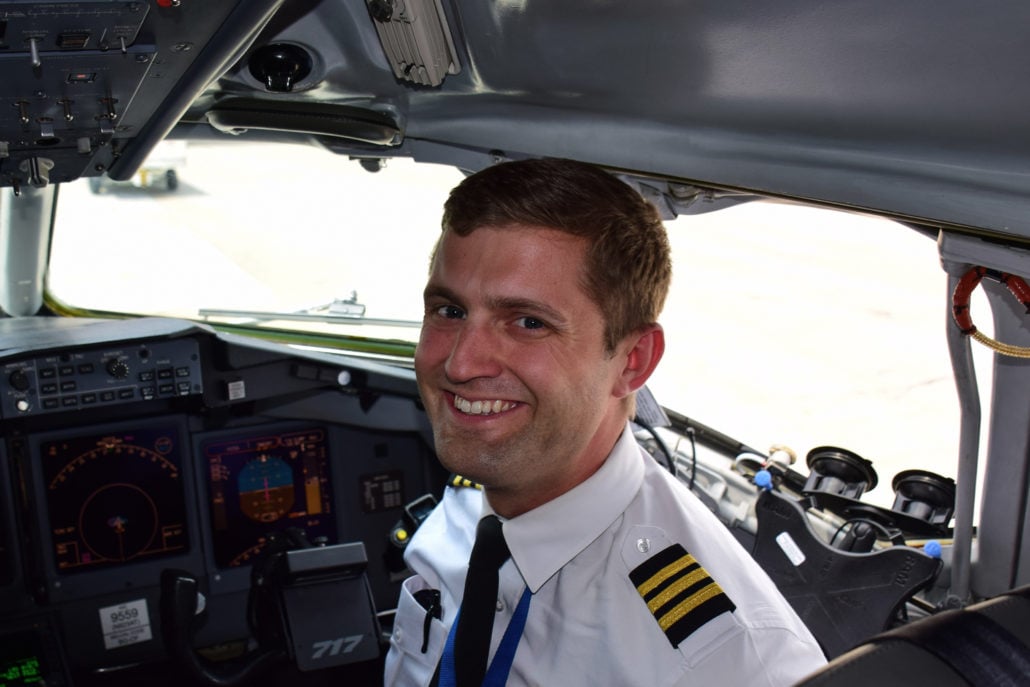
In our Ask a Pilot series, pilot Spencer Marker answers one of your aviation-related questions each week. See past installments here and submit your own to Whitney@johnnyjet.com.
The question
Hi Spencer. Why does it seem like every airplane today has two engines when we used to see so many with three or four?
—Marie S.
The answer
Hey Marie. Thanks for writing in this week. There are a number of factors that are taken into account when determining the number of engines an airplane will use. Among these are efficiency, redundancy and mission. In the past, airplanes would require three, four or even eight engines in order to propel them through the sky. However more recently, two engines have become the norm. Let’s look at why.
A brief history of multi-engine airplanes
When the Wright Brothers took flight for the first time in 1903, their flying machine was powered by a single 12-horsepower piston engine driving two propellers. As airplane development took off (no pun intended), aircraft designers began building heavier airplanes than could fly with one engine alone. These engines were simple (compared to today’s piston engines) and fairly low-powered so many were required. The German Dornier Do-X is a spectacular example of early large aircraft design, requiring the power of 12 piston engines to fly!
As time went on, designers continued to build larger and larger aircraft, and engine technology was slow to adapt. When the Boeing 747 was conceived, there was no engine at the time that could power the mammoth aircraft. Pratt and Whitney designed the JT9D high-bypass turbofan engine to power the new jet.
When the B-52 bomber was designed, it featured eight turbojet engines mounted in pods underneath the wing. The eight jets powering jet churned out 10,000 lbs of thrust each, totaling 80,000 lbs of thrust. Compare that to the modern GE90-115B engine powering the Boeing 777-300ER, which pushes out 115,000 lbs of thrust per engine. While the B-52s engines were cutting edge in the 1950s when she was built, all eight were needed just to make the aircraft fly.
Reliability was also a factor in early jet engines. When airplanes began connecting continents, flying over large bodies of water became a requirement. However, the engines of the time would fail with much more frequency than modern jets of today. Having three or four engines on an airplane achieved the redundancy designers were seeking, as there would still be two or three engines running in the event of a single failure.
Modern twin engine airplanes
As time progressed, jet engines became not only more powerful, but much more reliable. And with the introductions of the twin-engine Airbus A300 and Boeing 767 in the 1970s and 80s, it seemed that overwater flight was plausible with just two engines.
To facilitate this, the FAA introduced a set of rules pertaining to overwater flight with these aircraft called ETOPS, which stands for Extended-Range Twin-Engine Operational Performance Standards. These rules dictate how far a twin-engine airplane can be from a suitable alternate landing airport in the event of an engine failure.
Initially, the FAA allowed an aircraft to be 90 minutes away from a suitable airport. This was subsequently extended to 120 minutes and later 180 minutes. As engine reliability improved, the regulations accommodated flights of twin engine airplanes further from shore.
With reliability improvements, engine power also increased to make the presence of more than two engines unnecessary and inefficient. For example, the Boeing 777 was debuted in 1994 to compete with the Airbus A340 and the McDonnell Douglas MD-11. The new design featured only two engines, while the others featured four and three respectively. The new jet was able to capture orders from its competitors by offering a 10% increase in efficiency and cutting-edge engine technology.
The new airplane became a staple of international long-haul fleets, displacing inefficient three- and four-engine aircraft. This trend has continued with aircraft like the Boeing 747 and A380 quickly falling out of favor, being replaced by modern twin-engine aircraft like the 777, A350 and 787. In fact, Delta Air Lines is replacing their fleet of four-engine Boeing 747 aircraft with the cutting-edge twin-engine Airbus A350.
To sum up
Thanks for the great question, Marie. As an #avgeek myself, I find it rather boring to see so many twin-engine aircraft flying around. And it is rather disappointing that the “Queen of the Skies,” the 747, is quickly becoming unpopular. However, as airlines are businesses and their bottoms lines matter above all else, we will undoubtedly see the industry continue to purchase efficient twin-engine airplanes at the expense of their four- or three- engine ancestors. What are your favorite three- or four-engine aircraft? Post in the comments below!
Thank you so much, Marie! If anyone has a burning aviation question or something you would like cleared up, drop us a line at Whitney@johnnyjet.com to get your question featured in an upcoming Ask a Pilot column.
Tailwinds,
—Spencer








Nice article. Personally I like the 4 engine A 380 for its design but I also love the 2 engine Boeing 777.